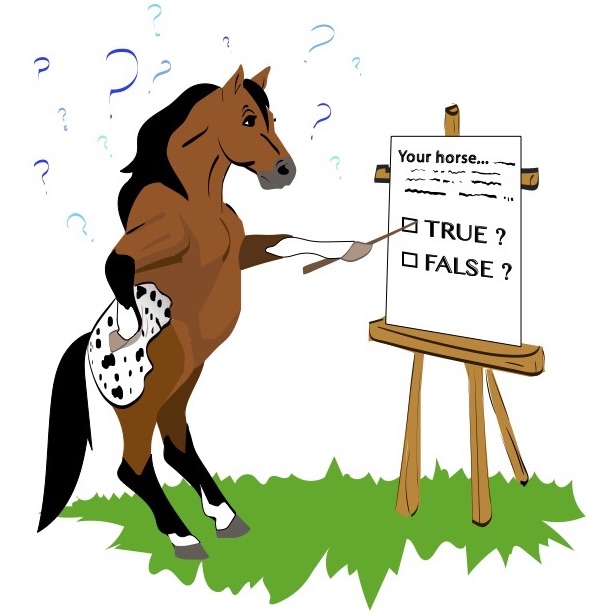
1. True or false: A longe whip lying on the ground is not likely to be a serious injury risk to your horse.
T / F
2. True or false: A manure fork parked within reach of a stalled horse’s muzzle can be a serious safety hazard.
T / F
3. True or false: Metal T-posts are safe as an element of horse fencing as long as the fence includes a strand of hot wire.
T / F
4. True or false: It’s safe to turn your horse out wearing a halter as long as he’s thoroughly halter broke.
T / F
HOW’D YOU DO? (Answers below.)
1. F is correct. Stepped on just right, the whip can act like a spear. A horse’s weight can drive the solid core of the whip up into the foot, penetrating a critical structure such as the coffin joint or navicular bursae, causing serious damage. Always keep the ground all around your barn area and arena free of any potentially dangerous objects.
[READ: How to avoid, treat puncture wounds in the foot.]
2. T is correct. Horses are inquisitive and often bored when confined. Anything they can grasp in their mouth is at risk of being “played with,” with resulting injury always a possibility. Don’t leave brooms, shovels, pitchforks or anything else leaning in a spot where your horse can reach them.
3. F is correct. If you have T-posts on your property in any capacity, cap them. Electric fencing can fail, and T-posts are always potentially a harpoon, so the only safe T is a capped one. Commercially available T-post caps are inexpensive and easy to obtain at feed or farm stores (or at Amazon.com—see below). In a pinch, a tennis ball can serve as a temporary cap.
4. F is correct. No amount of training will stop a horse from panicking if his halter catches on something and “traps” him. Always remove your horse’s halter before turning him out, or else outfit him in a halter with a breakaway crownpiece.
[READ: The bizarre injury risks that can threaten your horse.]
Don’t miss out! If you’re not already receiving H&R’s fun and informative weekly newsletter, sign up now for The Ride. It’s *free*!
ALSO *FREE*: The terrific e-magazines Horse&Rider Monthly and Trail Rider Monthly. Sign up now!

